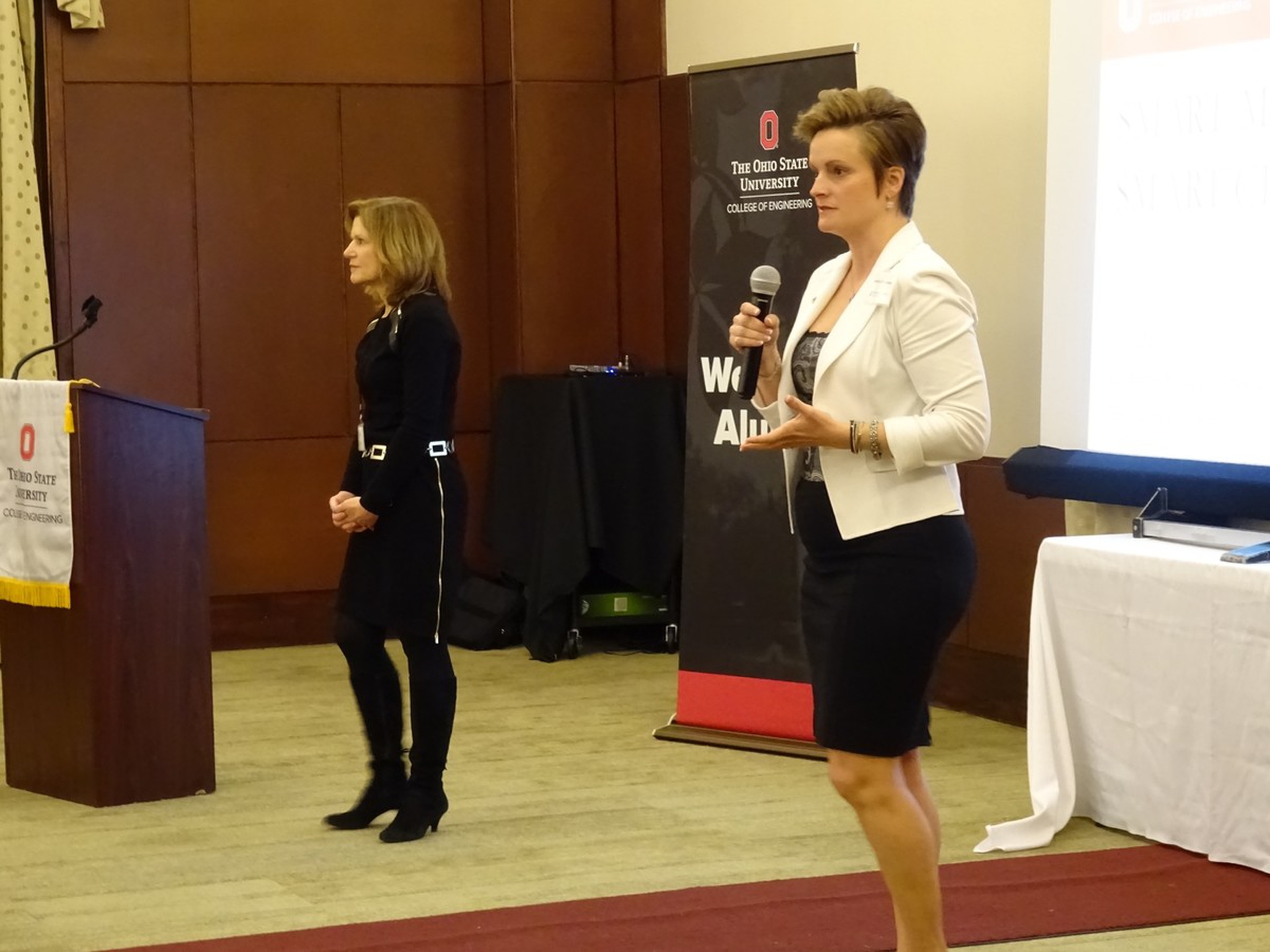Buckeye research leaders working to bring transportation innovation to reality
Carla Bailo and Joanna Pinkerton are selling a future where trucks and cars drive themselves, data analytics keeps traffic flowing during rush hour and accidents are rare.
They are two of the leaders in The Ohio State University’s efforts to bring smarter transportation solutions to communities in the Buckeye state and, eventually, around the world. Bailo is the assistant vice president for mobility research and Pinkerton is the co-director of the Honda/Ohio State partnership.
On Tuesday, they presented highlights of Ohio State’s research into smart transportation technology at an event hosted in Worthington by the College of Engineering. The research mission goes beyond innovation.
“If it doesn't improve people's lives, it's just technology for technology’s sake,” said Bailo.
Last year, Columbus won the U.S. Department of Transportation’s Smart City Challenge. The win secured $40 million in grants from the federal government and another $10 million from venture capital firm Vulcan to develop and test high-tech transportation solutions. Millions more in private and public donations will be poured into the Smart Columbus initiative.
Ohio State is the lead researcher for the Smart Columbus project. The university is already testing autonomous cars, sensors that will make travel safer and tools to connect communities to more flexible transportation options.
For Bailo, mobility is more than getting from point A to point B. It’s also about connecting communities to better jobs or better health care.
“Mobility is also moving from one social level to another,” she said. “If you’re isolated, it’s very hard to break out of certain areas in our community.”
The university is also working on finding solutions to transportation problems outside of the Smart Columbus project. Earlier this year, the state and the university committed $45 million to expand the university-affiliated Transportation Research Center in East Liberty, Ohio. The College of Engineering has also committed $24 million over five years to hire faculty and staff to support research into autonomous vehicles.
| Carla Bailo discusses the future of self-driving cars |
The center and a project to do vehicle testing on the U.S. 33 corridor could find new ways to reduce traffic congestion even if there are more cars on the road. The innovation could save money as well as time.
“Our challenge is to do research to optimize our existing infrastructure. We all know we can’t afford to build trillions and trillions of dollars of infrastructure,” Pinkerton said.


